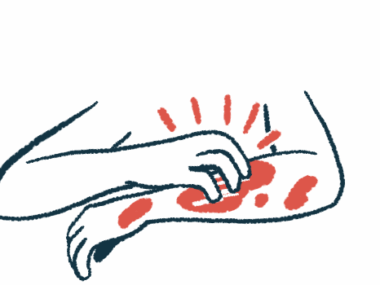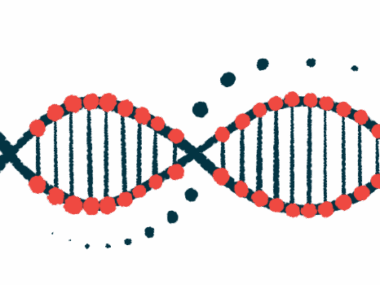Combination therapy works to treat acquired TTP patients in India
6-year study also highlights sex differences seen with rare blood disorder
Written by |

Using both corticosteroids and plasma exchange therapy — each a standard treatment for acquired thrombotic thrombocytopenic purpura (TTP) — together was found to significantly improve outcomes for most patients in India with the rare blood disorder, according to a new six-year study.
“[Plasma exchange] combined with corticosteroids led to rapid hematologic recovery [the return of blood cell counts to normal or near-normal levels] and was safe and effective,” the researchers wrote.
The study, conducted at a single care center in Eastern India, also highlighted potential differences in how acquired TTP tends to affect male versus female patients. In one measure, the number of deaths among patients was much higher for women than for men.
The study, “Therapeutic plasma exchange in immune thrombotic thrombocytopenic purpura: A six-year prospective study on clinical efficacy, laboratory trends, and sex-based differences,” was published in Transfusion and Apheresis Science. Its goal was to shed light on the “procedural characteristics, sex-based presentation, and laboratory response dynamics” seen in people in India with acquired TTP.
Using corticosteroids plus plasma exchange to treat acquired TTP
TTP is a blood disorder marked by low activity of ADAMTS13, an enzyme that regulates blood clotting. Acquired TTP, also known as immune-mediated TTP, is the most common form. It’s caused by antibodies that target the ADAMTS13 enzyme, preventing it from working correctly.
Plasma exchange and corticosteroids are both standard treatments for people with acquired TTP. Plasma exchange works to remove a patient’s plasma — the noncellular part of blood — and replace it with healthy plasma from a donor. This can help reduce the levels of disease-driving antibodies while providing functional ADAMTS13. Corticosteroids are medications that suppress the immune system, which can also help lower the levels of disease-driving antibodies.
In this study, scientists reported on the outcomes of 43 adults newly diagnosed with acquired TTP who were treated at the Indian center between 2019 and 2024.
“India has limited published data on TTP,” the scientists noted, highlighting a need for more research on this disease in the country — and in other parts of the world that are underrepresented in scientific literature.
“A better understanding of … trends in response to therapy can aid in optimizing [treatment] strategies, minimizing unnecessary procedures, and identifying patients at risk of poor outcomes,” the team wrote.
About three-quarters of the enrolled patients were female. The mean age of the participants was 36.1.
All patients were started on corticosteroids and plasma exchange therapy immediately upon receiving a clinical diagnosis of TTP. Each patient underwent at least six sessions of daily plasma exchange.
Results show plasma exchange therapy is ‘indispensable’ in acquired TTP
TTP is usually marked by low levels of hemoglobin — the protein red blood cells use to carry oxygen through the body — and low levels of platelets, the cell fragments that help blood clot.
Hemoglobin levels were significantly lower in female patients prior to treatment, the researchers noted. Platelet counts tended to be lower in male patients, though differences weren’t statistically significant, meaning it’s mathematically plausible that the difference could just be due to random chance.
A few other blood markers also tended to vary by sex, though the differences weren’t always statistically significant, according to the team.
“These findings may reflect differences in disease severity, hormonal influences, or delays in diagnosis, and should be explored further in larger cohorts,” the scientists wrote.
Following treatment with corticosteroids and six plasma exchange sessions, mean hemoglobin levels increased significantly, from 6.6 to 10.8 grams per deciliter of blood. Platelet counts also increased, from fewer than 20 million to more than 100 million platelets per milliliter of blood. The levels of markers of red blood cell destruction also decreased following treatment.
“Prompt [plasma exchange] following corticosteroid initiation achieved rapid hematologic [blood count] remission and reversal of hemolysis [red blood cell destruction],” the researchers wrote.
According to the team, this finding “highlights the indispensable role of [plasma exchange] in acute management” of acquired TTP, especially when corticosteroids alone aren’t enough to induce remission.
Female patients accounted for 6 of 7 deaths in small study
The findings also “emphasize the need for timely intervention” in treating patients, the team noted.
[The number of deaths among women patients is] a trend warranting further investigation into potential sex-specific biological or clinical risk factors.
Although most of the patients recovered, seven individuals died despite treatment with corticosteroids and plasma exchange. The researchers noted that six of these seven deaths occurred in female patients, which they said is “a trend warranting further investigation into potential sex-specific biological or clinical risk factors.”
Among other factors, “the observed sex-based disparities … underscore the need for individualized protocols … and continued research in resource-limited settings,” the researchers concluded.








